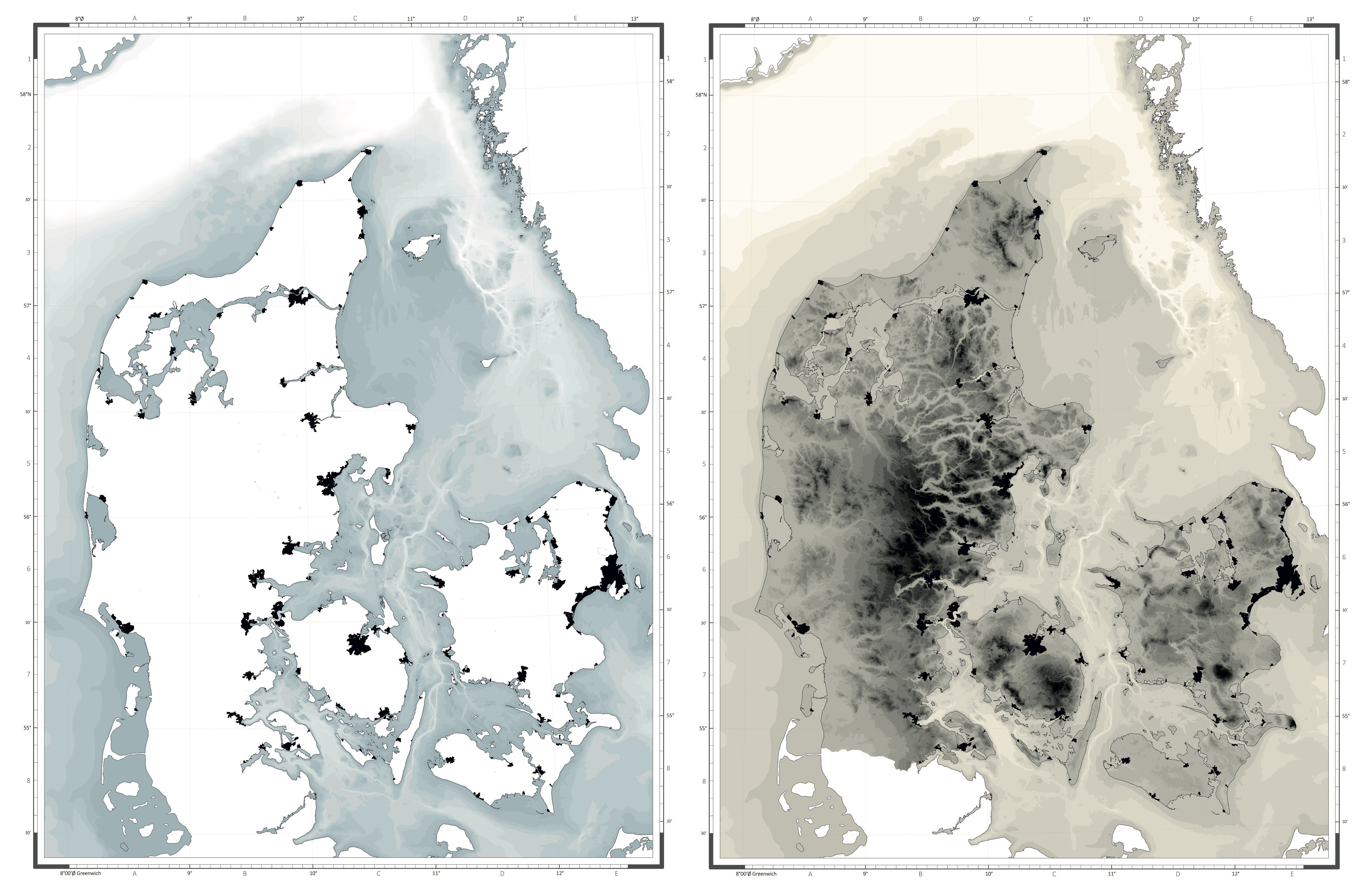Katrina Wiberg et al., The Little Blue Atlas (Det Lille Blå Atlas: Undersøgelser på Danmarkskort af relationer mellem hav, kystby og land) (Arkitektskolens Forlag, 2022), see ➝, is part of a shared research project "Coastal Cities and the rising sea – new solution spaces” by Aarhus School of Architecture, Copenhagen University, and Danish Technical University.
“Factsheet: People and Oceans. The Ocean Conference, United Nations, New York 2017”, United Nations, June 5, 2017, see ➝.
Carl-Johan Dalgaard, Mette Ejrnæs, Lars Gårn Hansen, and Jakob Roland Munch, “Boligejere med havudsigt bør betale mere,” De Økonomiske Råd, Feburary 10, 2024, see ➝. Translation by author.
The selection follows a report on expected storm surge damage costs over the next hundred years in 48 Danish Coastal cities (COWI, Byernes udvikling ift. udfordringerne med havvand og stormflod (Realdania, 2017); COWI, Byernes udfordringer med havvandsstigning og stormflod (Realdania, 2022)). The number of case studies, however, increased from 48 to 54 to include a pool of cities that have participated in the project “Cities and the rising sea-levels” by Realdania in order to make further use of existing knowledge from this project.
With increasing urbanization and projected population growth in coastal zones—and with only 15% of the world's natural coastlines intact—these practices are also of concern in the biodiversity crisis. “Population Facts. The Speed of Urbanization around the World,” United Nations Department of Economic & Social Affairs, Population Division, December 2018, see ➝; “World Urbanization Prospects: The 2018 Revision,” United Nations Economic & Social Affairs, 2018, see ➝; “Factsheet: People and Oceans," The Ocean Conference, United Nations, New York, 2017; Douglas Brown, “Only 15% of the World’s Coastlines Remain in Their Natural State,” World Economic Forum, February 15, 2022, see ➝.
Ian L. McHarg, Design with Nature (New York: Doubleday, 1969); Anne Whiston Spirn, “Woodlands New Community: Guidelines for Site Planning” (1973), see ➝; Frederick R. Steiner and Ian L. McHarg, eds., Design with Nature Now (Cambridge, MA: Lincoln Institute of Land Policy in association with the University of Pennsylvania School of Design and The McHarg Center, 2019).
Anne Whiston Spirn, “Ecological Urbanism: A Framework for the Design of Resilient Cities” (2012), see ➝; Anne Whiston Spirn, “Deep Structure: On Process, Form, and Design in the Urban Landscape,” in City and Nature : Changing Relations in Time and Space (Odense: Odense University Press, 1993), 9–16; Anne Whiston Spirn, “The West Philadelphia Landscape Plan: A Framework for Action” (Department of Landscape Architecture and Regional Planning at the University of Pennsylvania, 1991), see ➝; Anne Whiston Spirn, The Granite Garden: Urban Nature and Human Design (New York: Basic Books, 1984).
The essay is based on research conducted at the Aarhus School of Architecture: What are we building on the edge to the future? (Katrina Wiberg, project lead, Martin Odgaard, Amalie Lykke Baadsgaard, Eirni Angeli, and Jakob Ørum), and The Little Blue Atlas (2022) and Postcards to the Future (2022) (Katrina Wiberg, project lead, and Tom Nielsen, with Sissel Sønderskov Rasmussen and Simone Stellô Stelsø Lauridsen as research assistants).
The Atlas and Postcards projects are part of the research Coastal Cities' Solution Spaces over Time (Kystbyers løsningsmuligheder over tid), a joint project between the Danish Technical University (DTU), Copenhagen University, and Aarhus School of Architecture. The research is co-funded by the philantrophic foundation Realdania.
